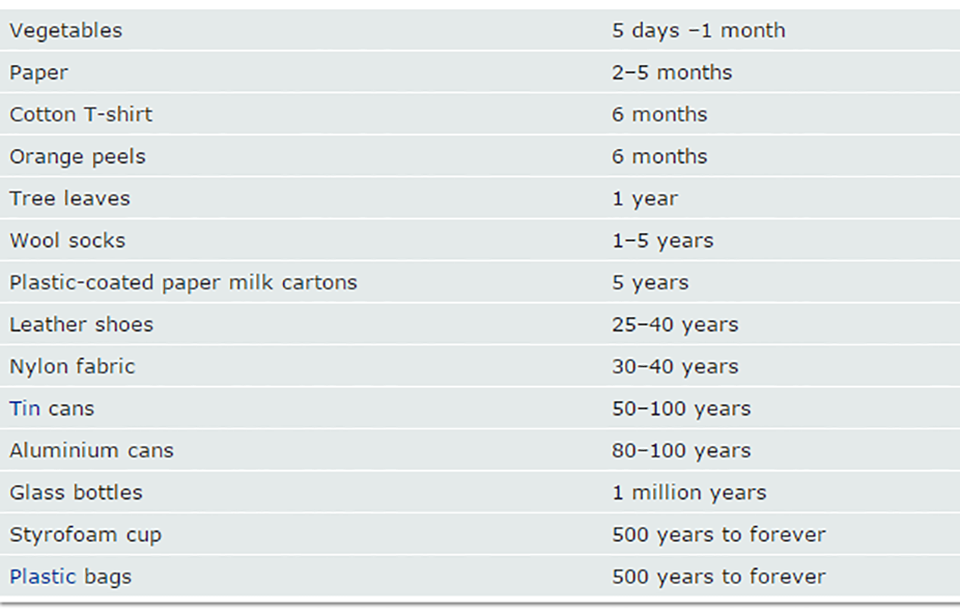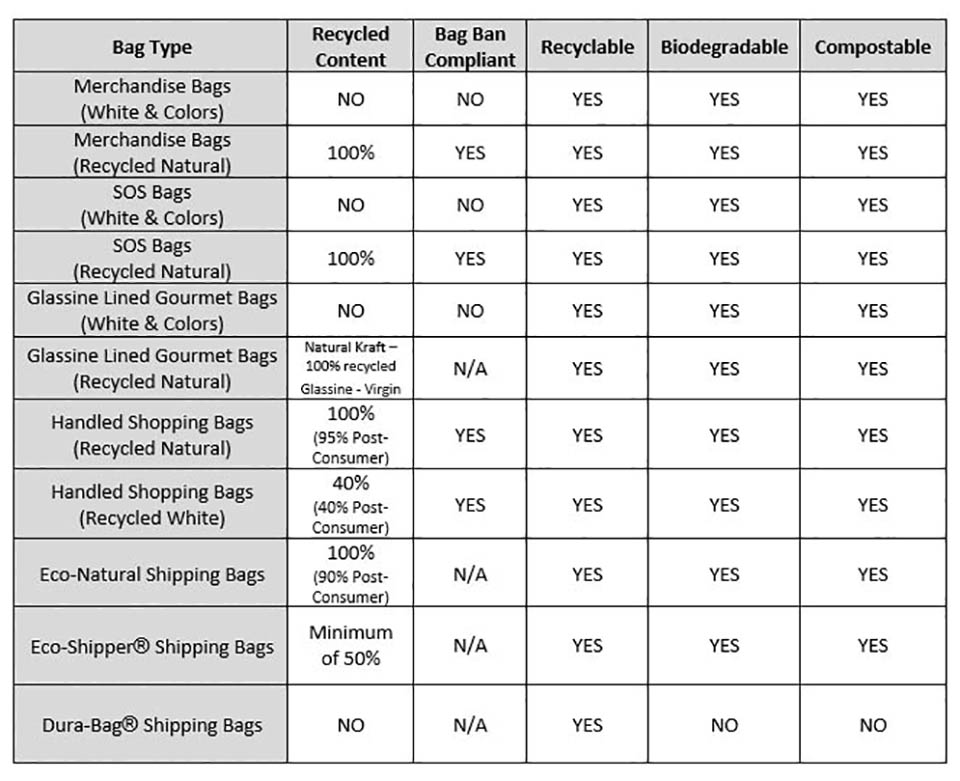As a paper bag manufacturer, we’re often asked whether our paper bags are recycled, recyclable, biodegradable, or compostable. And the simple answer is that, yes, WCI manufactures paper bags that fall into those various categories. We’d like to provide more information on some common questions regarding paper bags and their environmental implications.
What’s the difference between biodegradable paper bags and compostable paper bags?
In a world where many “eco-friendly” terms are thrown around interchangeably to attract buyers, even the most well-intentioned consumer can feel misinformed. Some common terms you may hear when making decisions regarding which environmentally responsible packaging best suits your product or brand are:
Biodegradable Bag: A bag that will break down into carbon dioxide, water, and biomass within a reasonable amount of time in a natural environment. Note that just because something is marked as biodegradable, it requires certain conditions to do so. Landfills lack microorganisms and organisms required for waste to degrade. And if it’s disposed of inside another container or plastic bag, biodegradation may not occur in a timely fashion.
Compostable Bag: The EPA definition of compostable is an organic material that will decompose under a controlled biological process in the presence of air to form a humus-like material. Compostable products must biodegrade within a reasonable amount of time (a couple months) and produce no visible or toxic residues. Composting may occur in an industrial or municipal composting site or in a home composter.
Recyclable Bag: A bag that can be collected and reprocessed to produce new paper. Paper recycling involves mixing the used paper materials with water and chemicals to break them down into cellulose (an organic plant material). The pulp mixture is strained through screens to remove any adhesives or other contaminants and then de-inked or bleached so it can be made into new recycled paper. Check out this simple illustration from Earth Answers.
Recycled Paper Bag: A paper bag made from paper that has been used before and put through the recycling process. The percentage of post-consumer fibers means how much of the pulp used to make the paper has been used by a consumer. Examples of post-consumer materials are old magazines, mail, cardboard boxes, and newspapers. For most bag legislation, a minimum of 40% post-consumer recycled content is required to be compliant. Many paper bags manufactured in our facility are made with 100% post-consumer recycled material.
Is it better to recycle a paper bag, or to compost it?
Either option is acceptable but please, DON’T THROW IT IN THE TRASH! Unless they have been heavily contaminated with grease or oils from food, or are laminated with poly or foil, paper bags can be recycled to make new paper products or composted.
Recycling can have a larger-scale environmental impact than composting because there is generally greater access to recycling programs than to compost collection. Recycling also puts the bag back into the paper supply stream, reducing the need for need virgin fiber. But composting or using bags as ground cover or weed barriers positively impacts the environment as well as it eliminates use of chemicals and plastics.
Before recycling or composting – don’t forget, paper bags are also reusable. They can be used to cover books, pack lunches, wrap gifts, create gift cards or notepads, or used as scrap paper.
How long does a paper bag take to biodegrade? How does that compare to other items?
This is an interesting statistic. Of course, how quickly something breaks down depends on the environment in which it must do so. Even fruit peels, which normally break down in just days won’t break down if put inside a plastic bag in a landfill because they won’t have adequate light, water, and bacterial activity required for the decay process to begin.
This chart we found at www.sciencelearn.org shows how long some common items take to biodegrade in a natural setting:
Visit their site to learn more about biodegradability and the science of how they measured the timeframes above. Factors that may affect how quickly a paper bag biodegrades include the thickness (or basis weight) of the paper and the environment in which it is expected to break down. Wetter, warmer conditions make for faster biodegradation.
Which paper bag is right for my company?
WCI offers many environmentally friendly packaging options as well as several that are bag ban compliant.
All paper merchandise bags and SOS bags manufactured at WCI are 100% recyclable and can be composted. We also offer many eco-friendly shipping bag options like the Eco-Natural® mailer, which is made with 100% recycled fibers and can be composted as well.
Please visit our website or call our sales team if you’d like help selecting a bag that will effectively package your product.
Sources:


